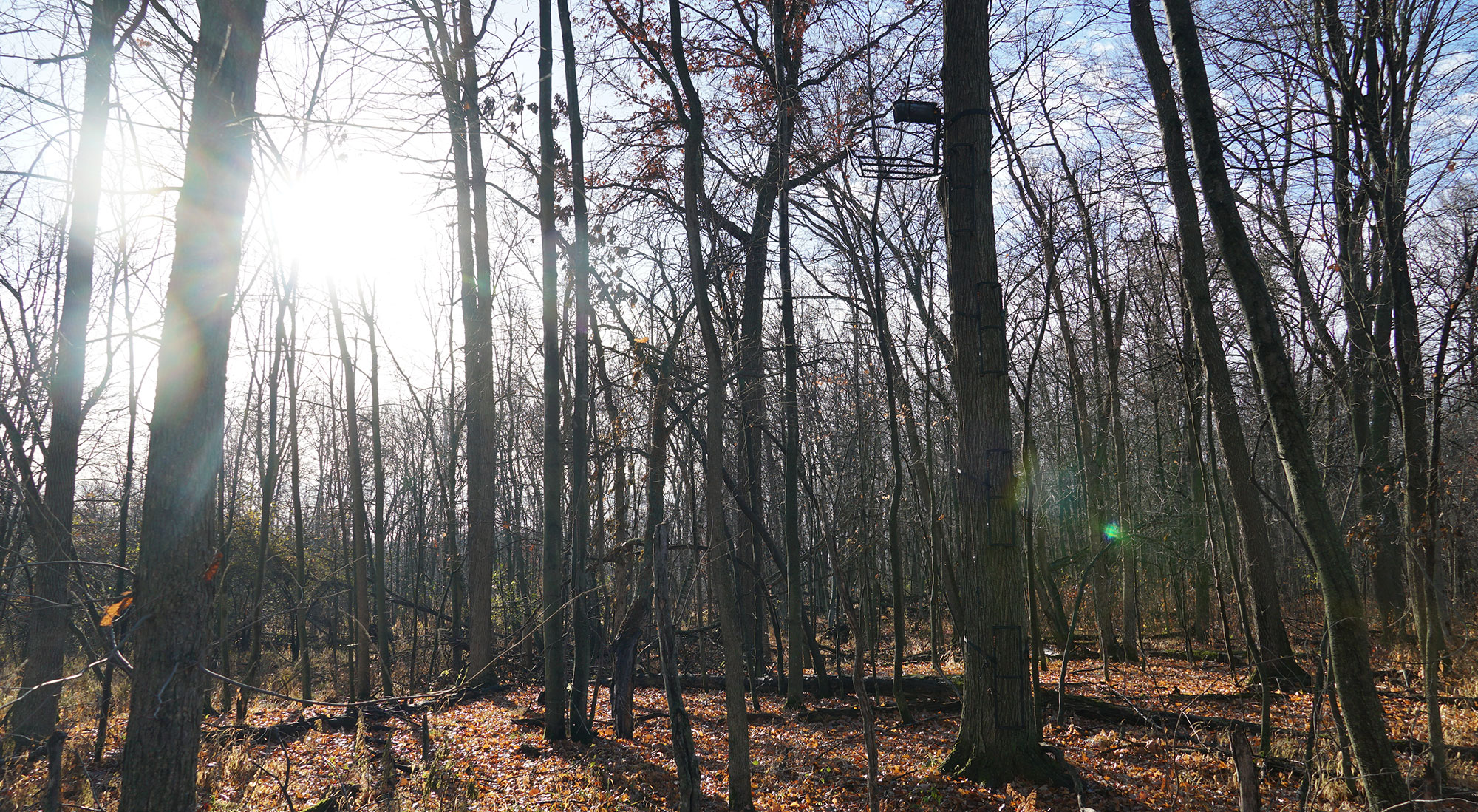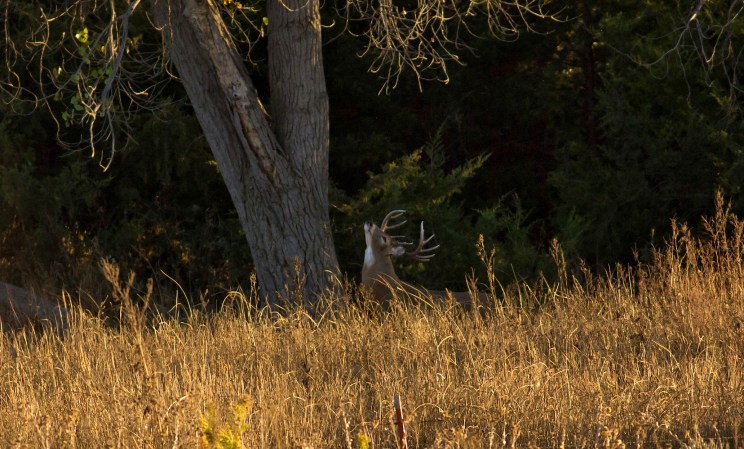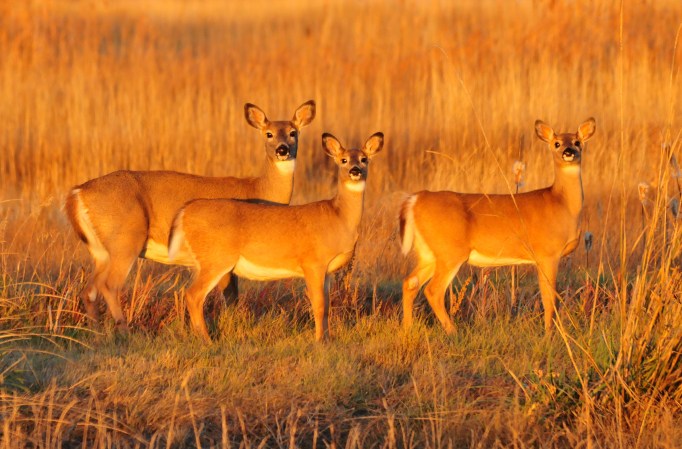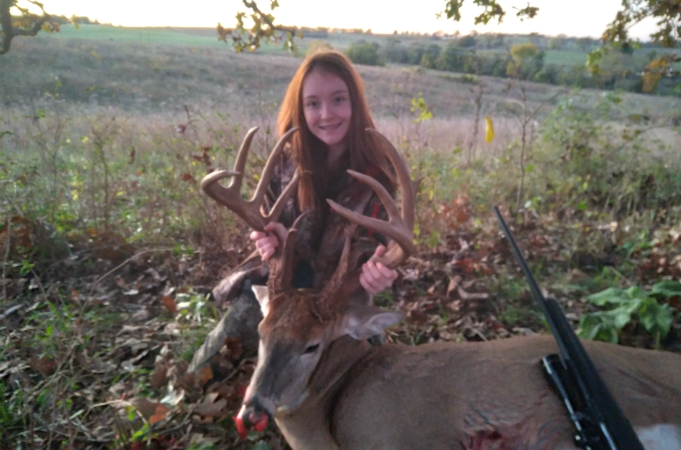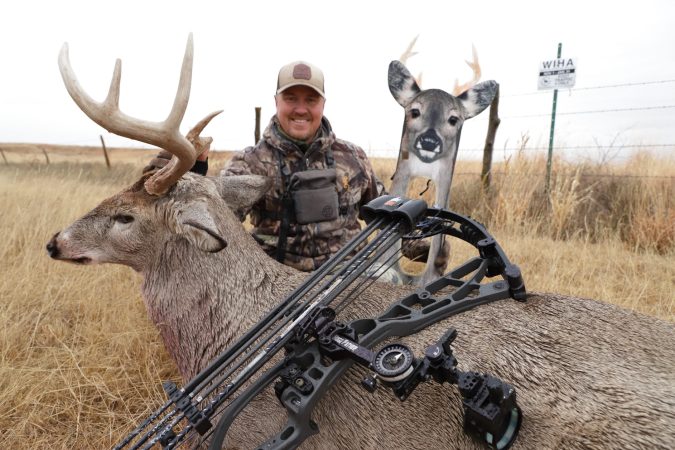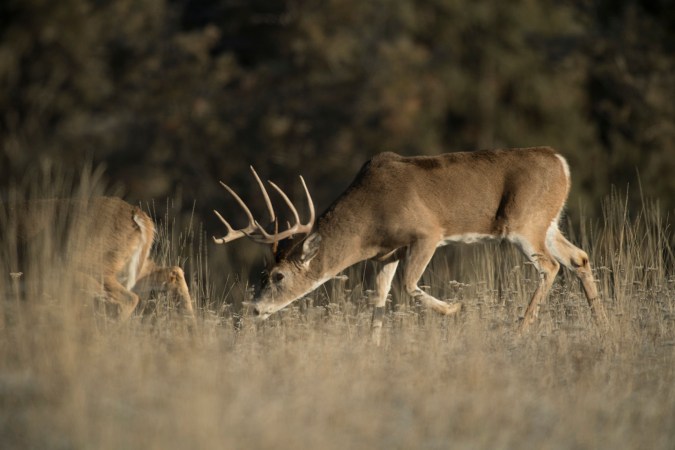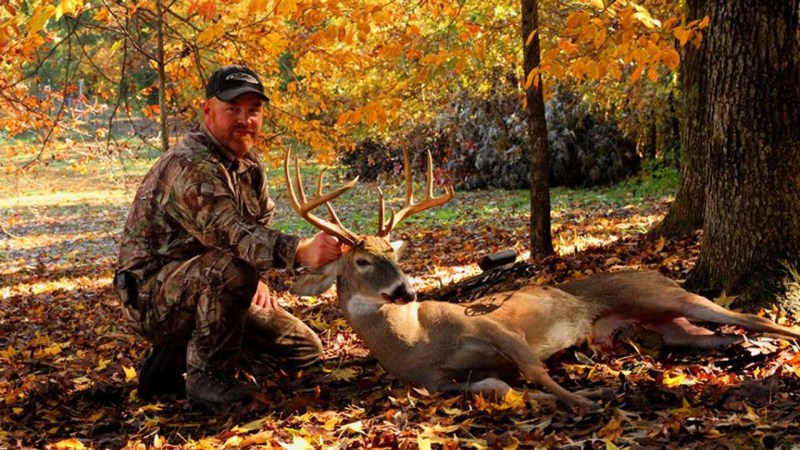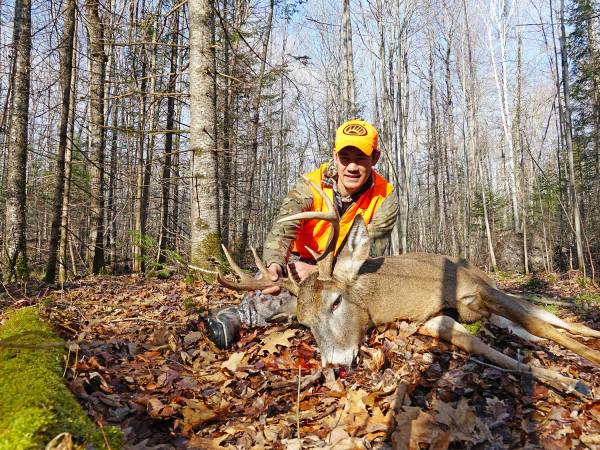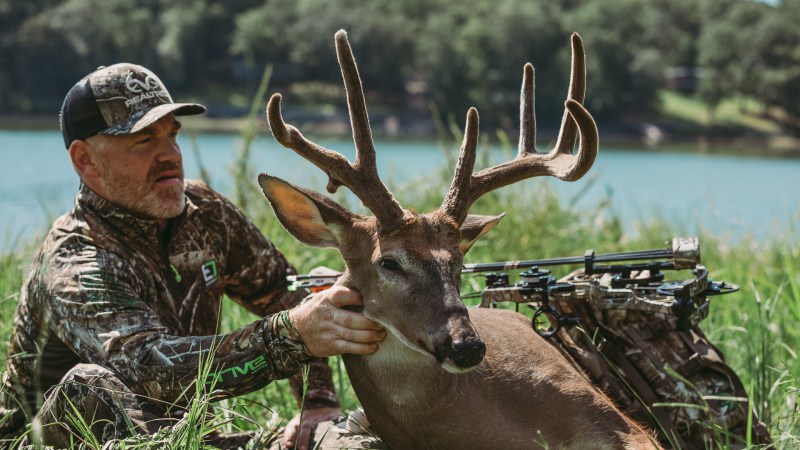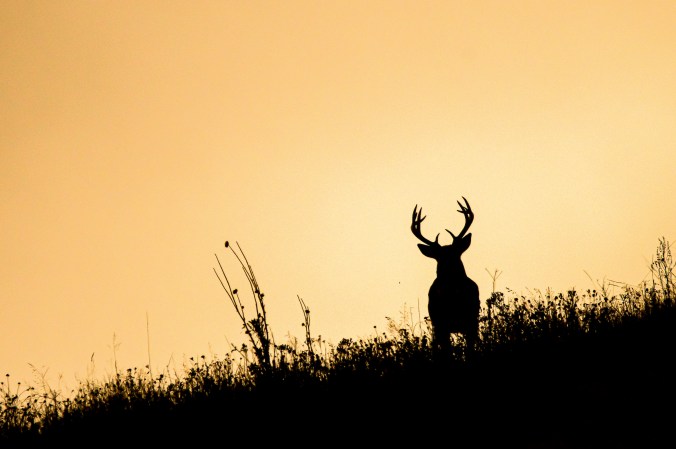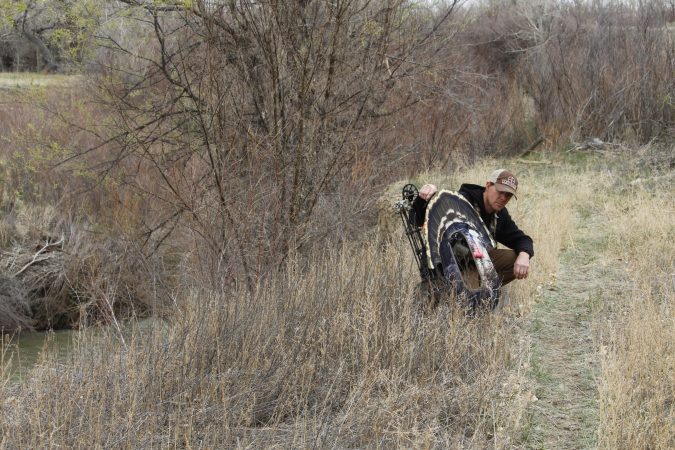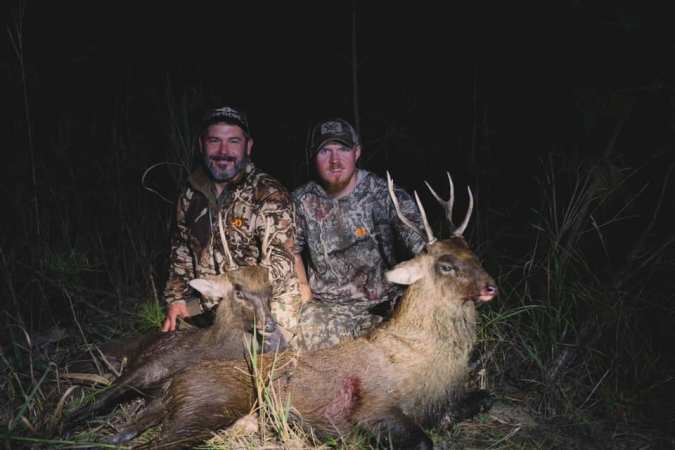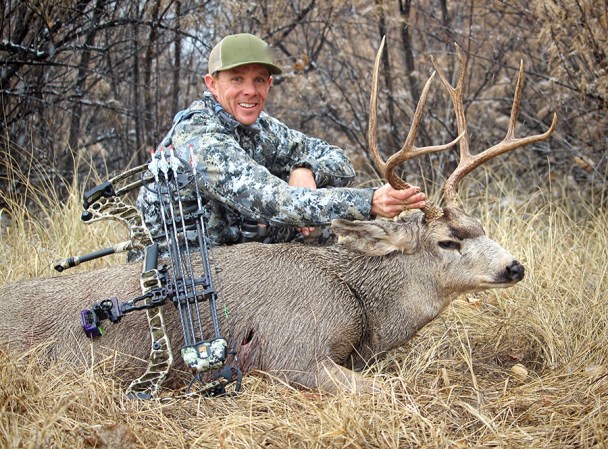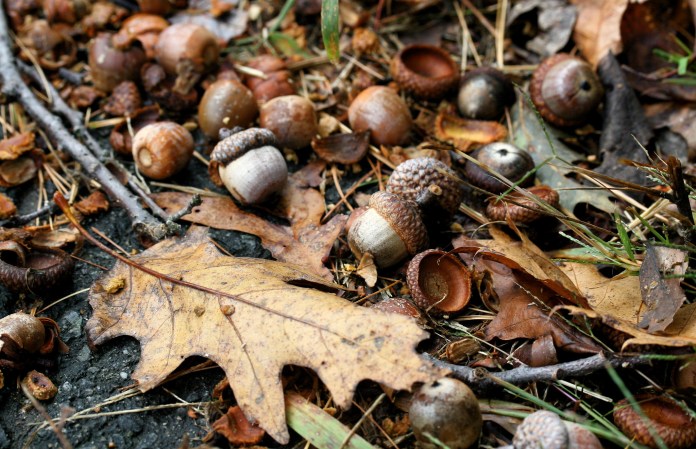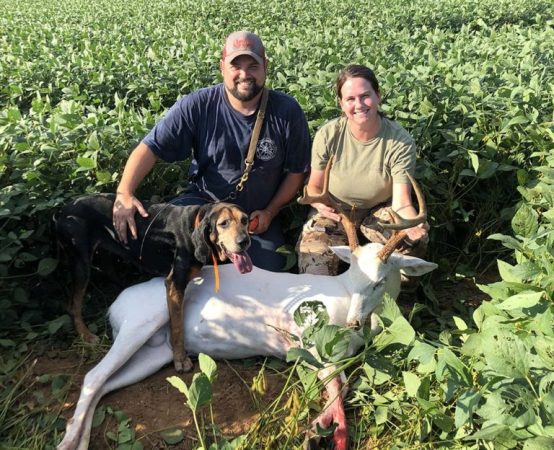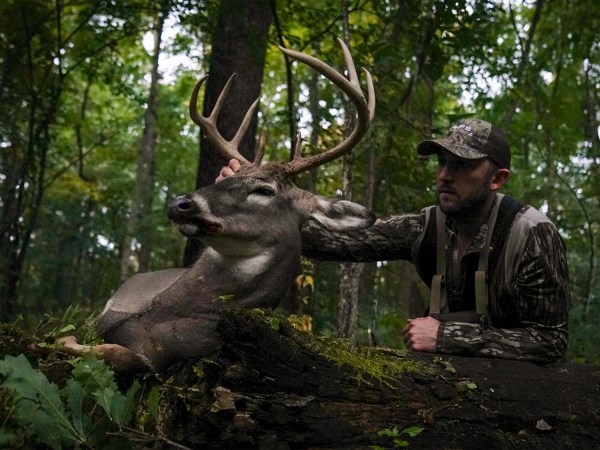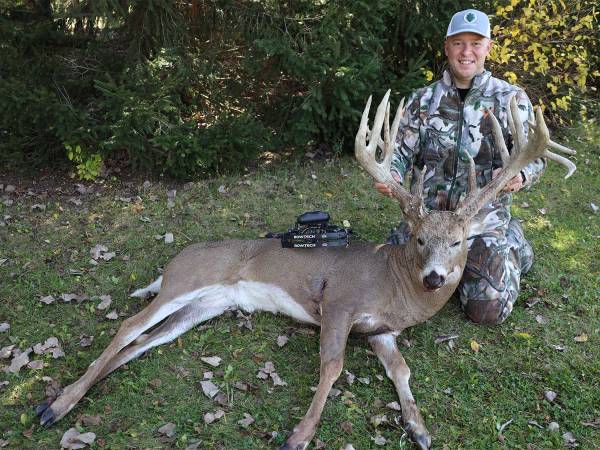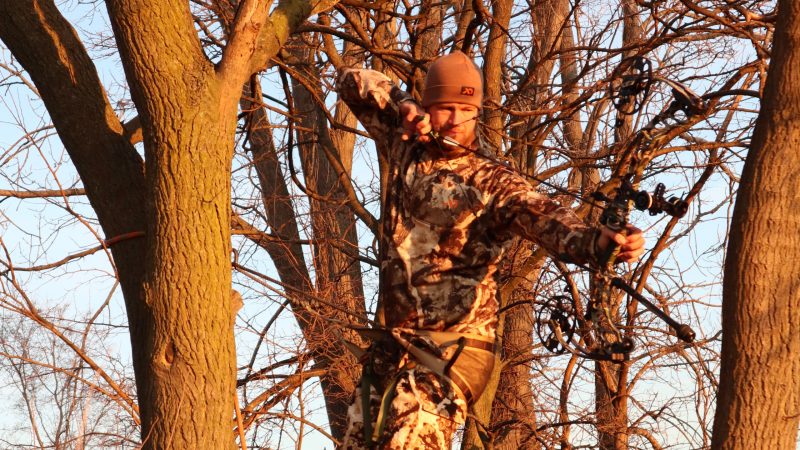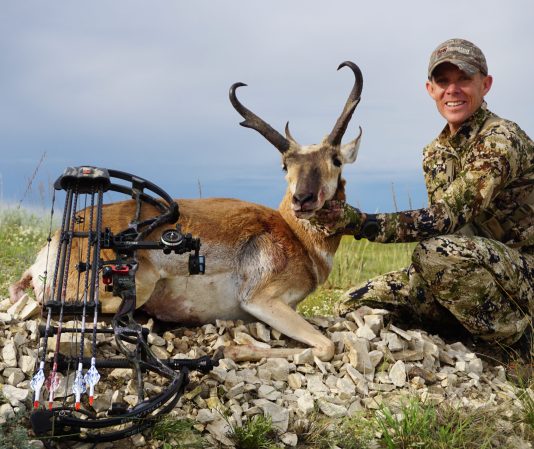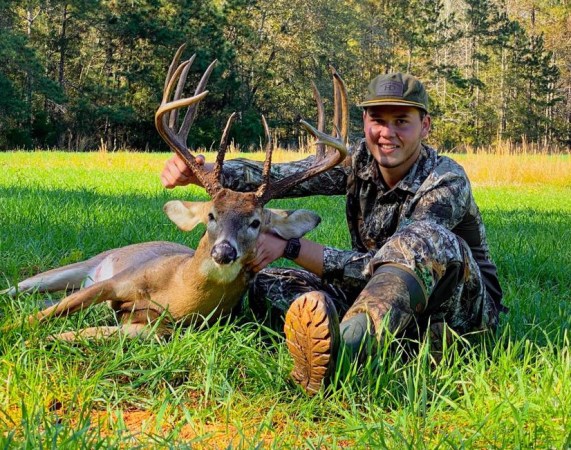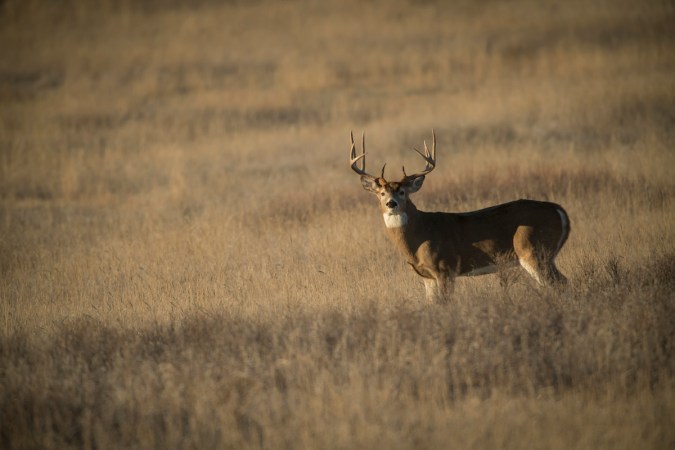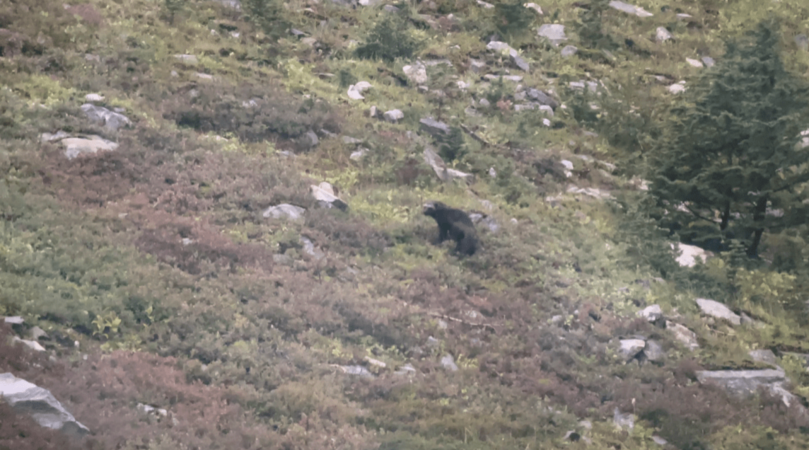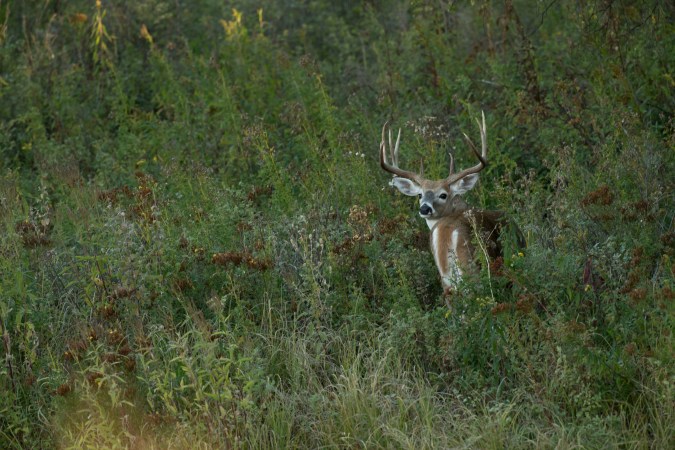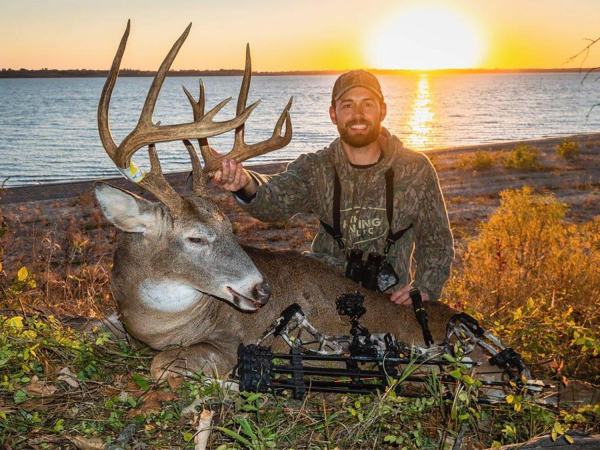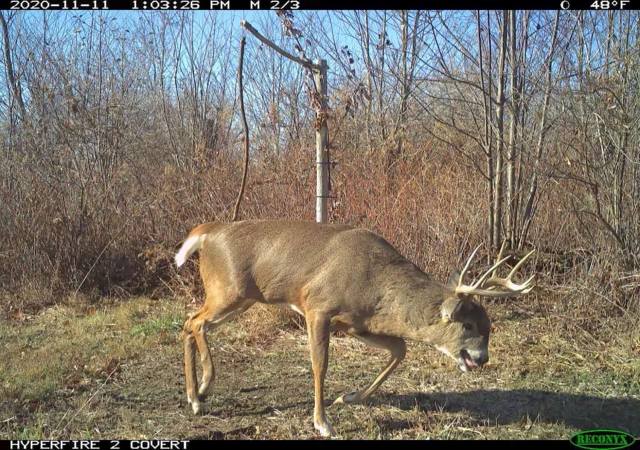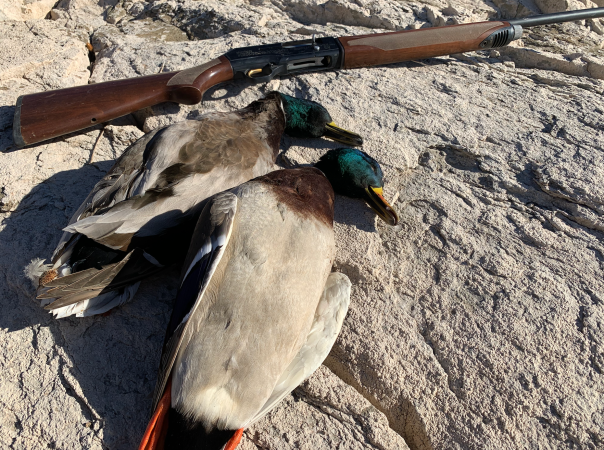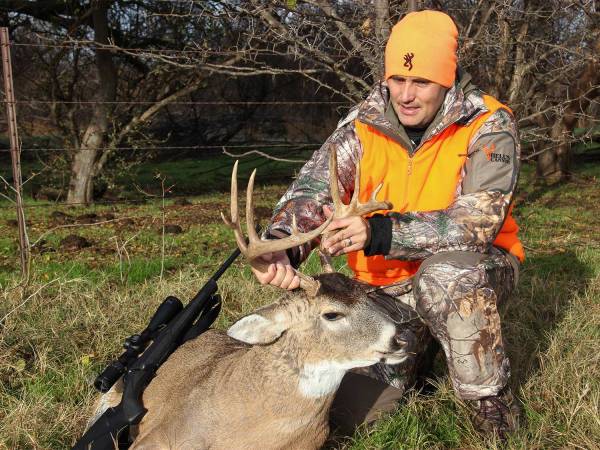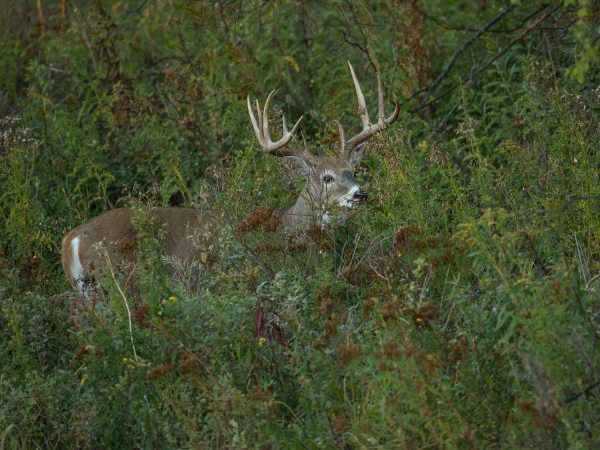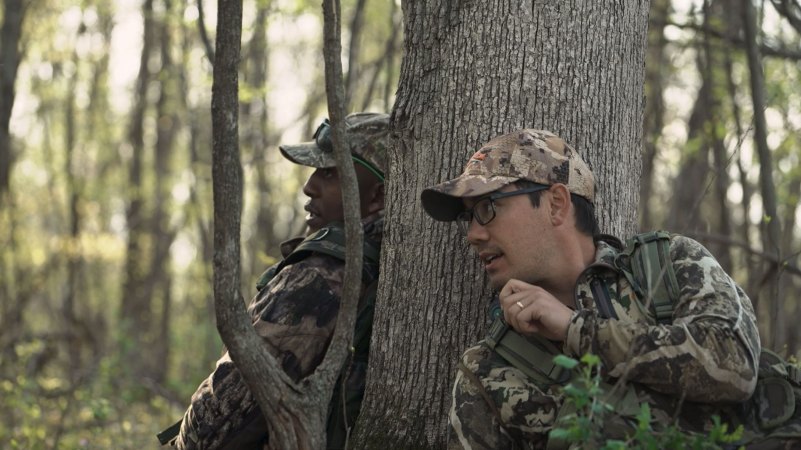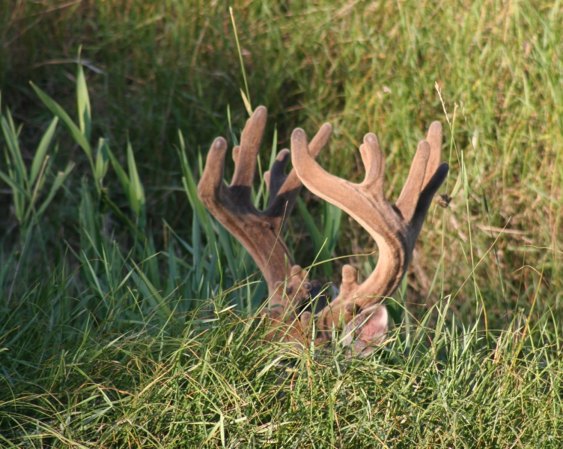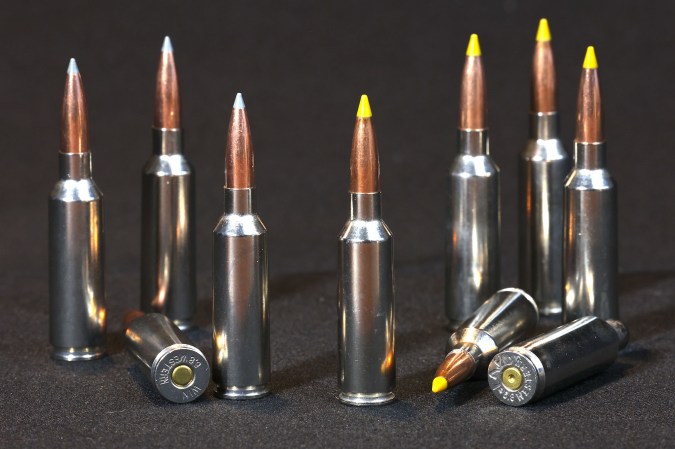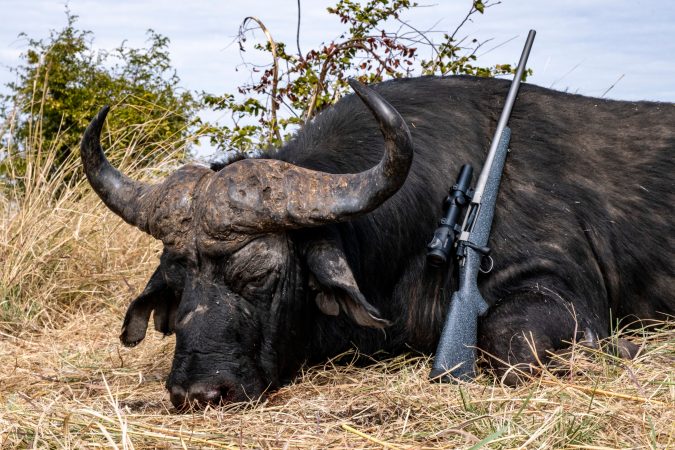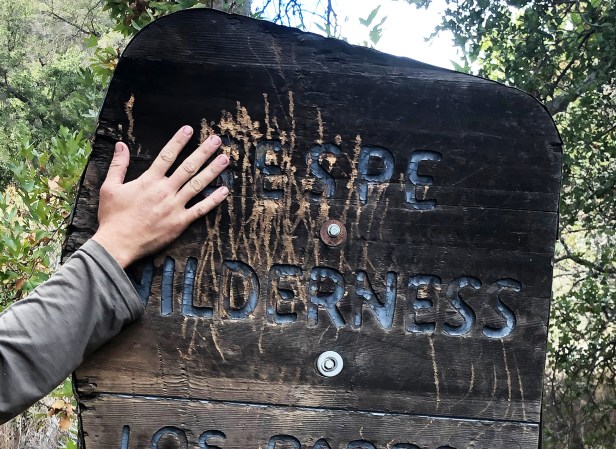The rut is a phenomenal time of year to be a deer hunter. It’s when anything can happen at any time. Bucks are chasing does, and even those elusive mature bucks can be spotted on their feet during daylight. The drive to breed can push bucks to travel miles from their typical home range which gives hunters the opportunity to tag a giant buck that they’ve never seen before.
However, the chaos of the rut can also make deciding where to hunt more challenging. If a big buck could show up anywhere at any time, it’s also true that he could never show up at the spot you’re hunting. And this leads to the biggest question when it comes to hunting the rut: Where should you sit?
To help you make the right call, we’ve listed the ten best stands for hunting the rut. These picks are based on interviews with expert whitetail hunters, deer biologists, and from personal experience in the field.
Buck Bedding Areas
While this might seem like a surprising choice, sticking to thick bedding areas that bucks have been using all season long can produce during the rut. According to The Hunting Beast’s Dan Infalt, this is an excellent way to encounter mature bucks that rarely move elsewhere during daylight hours. He says these are the places that he kills most of his mature deer, even during the rut.
Generally, these are the absolute thickest, nastiest areas around for bucks to live in. It gives them an advantage on seeing, hearing, or smelling danger before it reaches them. Hunting these in a strategic manner can produce solid results. Listen to the podcast below to hear how Infalt does it.
Doe Bedding Areas
One of the best stand locations for the rut is near doe bedding areas. This is a time when bucks are covering ground in search of does. The downwind sides of doe bedding areas can put a hunter in a good position to capitalize on cruising bucks.
“I will hunt doe bedding areas that harbor bucks, or adjacent bedding areas near there,” Infalt says. “But I still kill most of my bucks in bedding, not in funnels.”
Interestingly, according to recent research, you might even have new rutting does and bucks pushing through an area that weren’t previously there.
“We’ve learned that females make forays outside their traditional home ranges in the breeding season,” says Duane Diefenbach, wildlife biologist with Penn State University. “The conventional wisdom was that it was all about males making mate selection choices. But females play a role in mate selection as well.”
READ NEXT: Best Tree Stands, Tested and Reviewed
Pinch Points and Funnels
Pinch points and funnels are probably the most classic stand locations for hunting the rut. These spots include stretches of timber or early successional cover that pinches deer down through a narrow area. Whitetails that funnel through such spots are easier to encounter and get a shot at. Other great funnels include creek, river, ditch, and fence crossings. Topographical funnels, such as hogbacks, ridges, and saddles, are great spots, too.
That said, in heavily pressured areas, whitetails can begin to avoid such locations in favor of travel routes that receive less hunting pressure. This is especially true with mature bucks.
“One thing I see with private land guys is that, a lot of the time, they’ll place stands in the best funnels and spots, such as food plots,” Infalt says. “They’ll rotate through those stands, and the bucks learn where they are. You’ll get on a mature buck’s tracks and watch him go through the whole woods without going past one of those stands. It takes a mobile move to get them.”
Food Sources
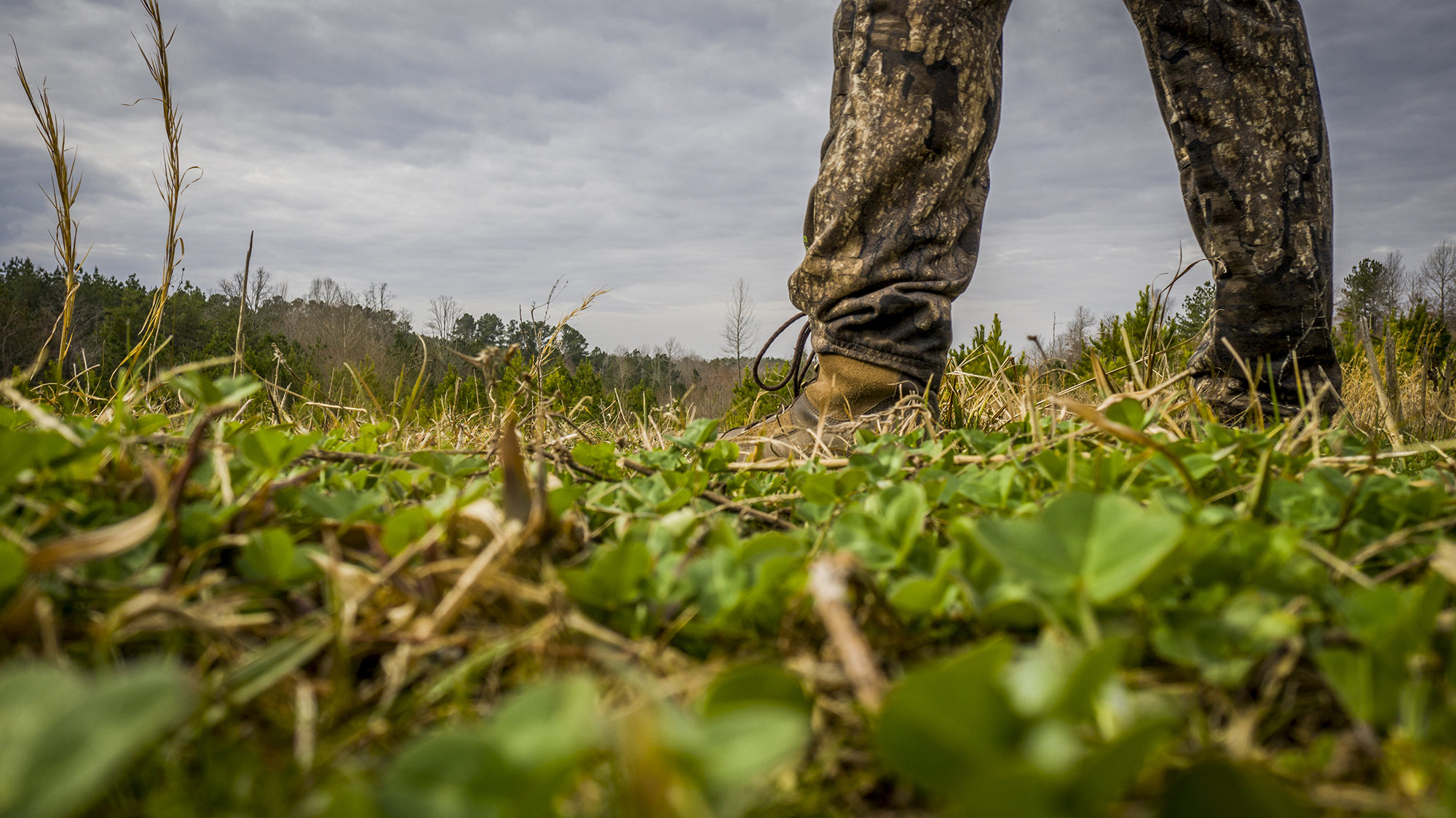
Throughout the year, food sources drive deer activity. If there’s food, deer will likely be there. If there’s bedding cover nearby, they will likely be there during daylight hours.
“I think one of the things that gets me onto bucks the quickest, and it isn’t 100%, is food,” Infalt says. “This year, there’s a good acorn crop. In a lot of cases, they’re bedding near acorns. That can kill you in the hills and forests where oaks are everywhere. But in the swamps and marshes, oaks are isolated on the islands. I look for the beds surrounding those.”
Art Helin of Own the Season agrees.
“Hunt food sources early mornings and evenings for the first part of the rut, as bucks will be out checking the does,” he says. “But by the first week of November, move to funnels and hunt hard during the midday, as the bucks will be up cruising going from bedding area to bedding area looking for that hot doe.”
Benches
Another excellent rut stand location is a bench. Quite simply, a bench is a long, relatively narrow strip of flat ground that cuts along a ridge. These areas are commonly traveled by bucks as they parallel ridge lines. Bucks use benches to scent-check does that are either above or below them.
In the morning, when thermals are rising, bucks tend to travel higher-level benches. This allows them to smell does (and danger) below them. In the afternoon, when thermals are falling, they tend to hit lower-level benches. This allows them to smell anything up above them.
Leeward Ridges
Similar to benches, leeward (downwind side) ridge lines are excellent places to intercept cruising bucks. These are also great places for mature bucks to avoid danger, even during the rut.
“A lot of these bucks are sitting up on top of a ridge where they can smell anything coming, and they can jump off and run down a very steep slope and be gone within seconds,” Diefenbach says. “To get to those spots is difficult. But if you can hike up to one of those spots, and set up during the day, you might catch one of those bucks walking. They’re going to get pushed by hunters to that spot. They’re going sit until maybe 10 a.m. If you can get there, you might intercept one.”
READ NEXT: 101 Best Deer Hunting Tips For the Rut
Water Barriers
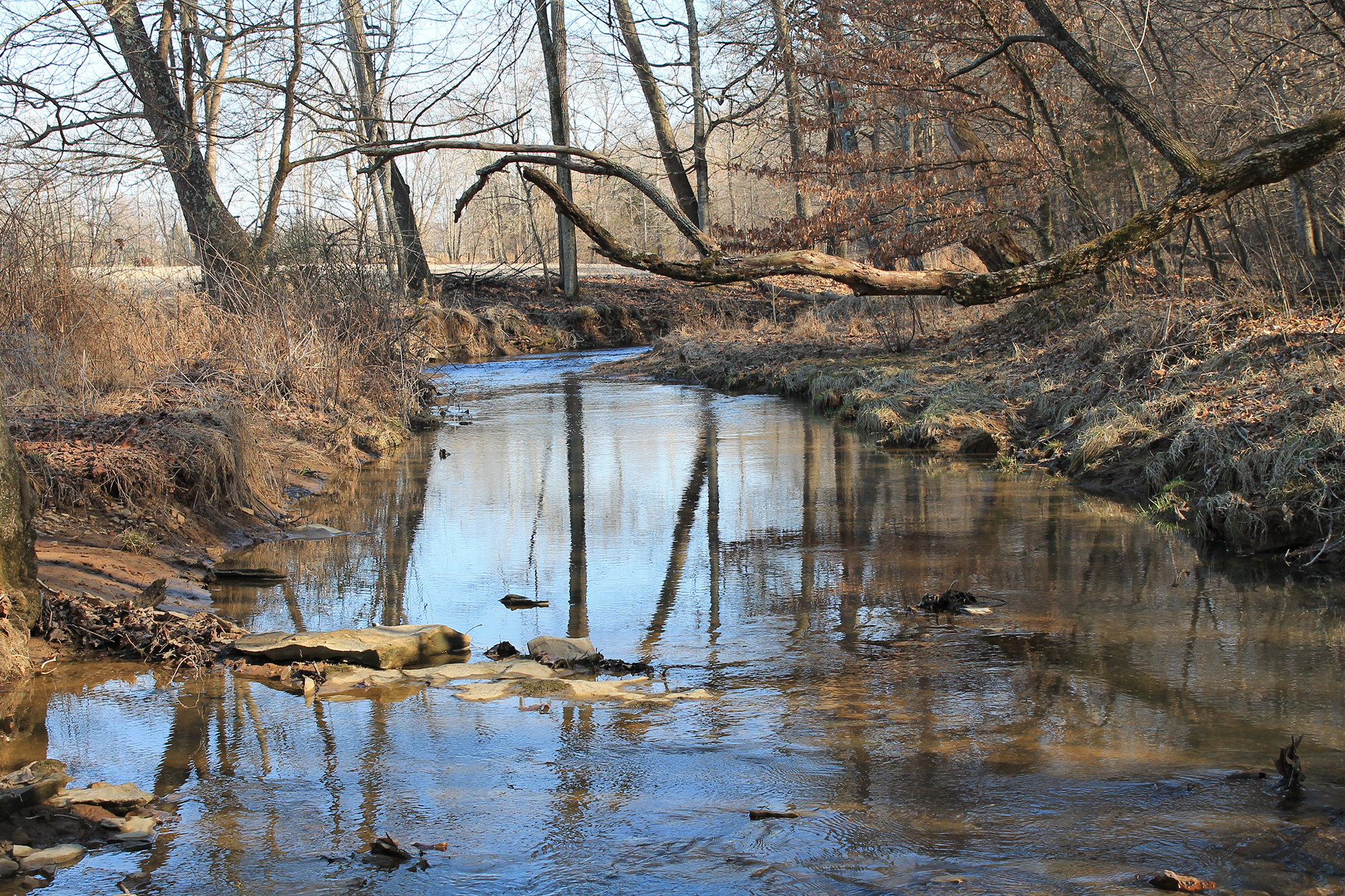
Whitetails get pressured during the rut more than any other time of deer season. Once the human intrusion begins, bucks start slinking into areas that give them survival advantages. Oftentimes, this comes in the form of a water barrier.
“I go anywhere other people don’t go,” Infalt says. “People leave behind scent that can last 10-15 days, perhaps longer than that. A deer can detect they were there. Deer really use water as a buffer. They bed in thick areas that are wet. They love high spots surrounded by water. Islands, oxbows, peninsulas, and coves are good. In marshes and swamps, I’m looking for islands and points in remote areas.”
Water Sources
But don’t forget that whitetails drink … a lot. And they drink even more during drought conditions, which much of the country is currently facing. They also drink more water during the rut. Cruising bucks must stay hydrated, drink upward of 5 quarts per day, and a secluded watering hole can be the ticket to a big, rutted-up buck.
Weird Spots
Throughout most of the year, whitetail bucks inhabit the spots you’d expect them to — the best available habitat. Rarely do you see them bedding or living in what we hunters perceive as subpar areas. That said, if ever there was a time for mature whitetails to inhabit a weird spot, it’s during heavily hunted seasons.
Diefenbach says mature whitetails grow old because they’ve found a place to survive and avoid human encounters. They have a spot where they aren’t disturbed.
“I think of one example down in the Gettysburg area,” Diefenbach says. “It’s highly developed — either crop land or human development with small woodlots. This one buck would just lay down along a powerline in a blackberry patch. That’s where he stayed from an hour or so before hunting opened for most of the day. They’re just smart like that.”
Of course, during the rut, bucks commonly push does to weird areas to get them away from the bulk of the deer herd. Such spots include sinkholes, small woodlots, pockets of CRP, and other areas where they can avoid other whitetails.
Trail Intersections
Lastly, consider trail intersections. Hunting where two or more well-used trails intersect is a solid choice during the rut. Bucks cover a lot of ground in search of does.
“There was a deer in Missouri that went 180 miles,” says Kip Adams, chief conservation officer with the National Deer Association. “That was the longest range movement that we know of in whitetails.” It traveled that distance over the course of 22 days during the 2017 rut. Picking main deer trail intersections gives you a chance to intercept one of the transient bucks.
Regardless of where you decide to hunt, just get out there.
